Kelly Hill doesn’t have an organic mattress. Yet. But when she was pregnant with her first child she made it a top priority to buy one for her baby’s crib.
“They spend so much time sleeping,” Hill said. Forty percent of their childhoods are spent sleeping, according to the nonprofit National Sleep Foundation. “Just the thought of something off-gassing around my child’s face just made me sick to my stomach.”
When her daughter was 3 and Hill was pregnant again, she found a store close to her Kennebunk home, The Clean Bedroom in Kittery, that specialized in organic mattresses and bedding. She and her husband shopped very carefully; organic mattresses tend to be considerably more expensive than standard mattresses, the kind that are made with petrochemicals and sprayed with fire-retardent materials. Their daughter was just a toddler, but they opted to buy her a queen bed. “Our rationale there was, we are going to make this big investment, let’s make sure it takes her all the way to college. And she can take it with her when she gets her own place.”
Hill considers herself a good researcher capable of making environmentally savvy consumer choices. (In fact, she and her husband were on their way to look at electric cars in Topsham when she called.) But for many shoppers, the marketplace of green bedding – from mattresses to sheets and pillows – which exploded about a decade ago, can be daunting to sort through, especially for anyone on a budget.
“I had to spend a crapload of time wading through these websites,” Cindy Isenhour said. She’s an ecological and economic anthropologist, a professor at the University of Maine and an associate at George J. Mitchell Center for Sustainability Solutions. In short, oriented toward environmentally conscious purchasing and no slouch in the research department. But she said there’s a lot of greenwashing in the bedding retail sector, particularly in “the mattress in a box phenomenon” that’s developed since about 2010.
As she put it, these mattresses are marketed toward cultural creatives and lovers of platform beds (perhaps one and the same) and they are cheap, $700 for a queen or as low as $128. You order them online and they arrive in a box in a couple of days. One of these retailers is called “Tuft and Needle,” a name that speaks of craft and handwork. Another, Zinus, offers a green tea foam mattress, which Isenhour looked at online. It was “infused with green tree extract to reduce odor,” she said. “You read green tea, right, and think, ‘This is really great.’ ”
But as she shopped, and probed, she found many of these cheap mattresses in a box are made with VOCs, or volatile organic compounds, and thus likely to emit gases that would make for a very unhealthy sleeping atmosphere, the kind not even an infusion of green tea could overcome. An EPA report on indoor air pollution lists formaldehyde-based resins as an ingredient in some mattress tickings, and likely respiratory irritant, as well as a probable carcinogen. It’s often not clear what a mattress is made of or how it was made.
All too often, it’s left to the consumer to prove that a product is safe, Isenhour said. Or not. That creates a social injustice problem in her mind, whereby those who don’t have the wherewithal or means to get beyond the greenwashing end up with the short end of the stick.
“Do they not have the right to sleep safely?” Isenhour said. “It is just ridiculous that consumers should be expected to do so much work.”
With that in mind, Source has tried to do some of the work for you. Here’s our guide to a greener bed.
SUSTAINABLE SHEETS
In the early aughts, retailers nationally made a fairly big push toward organic sheets. That prompted Cuddledown in Yarmouth to make a commitment between 2003 and 2010 to have 10 percent of its bedding lines be made of organic cotton. The benefits of organic cotton to the consumer include not just the psychological comfort of being chemical free, but very often, a physical one as well because the fabric can feel smoother and softer. The benefits to the farmer growing the cotton, and to the earth, are considerable. No pesticides or chemicals on the crop mean no pesticides or chemicals on the land, or in the runoff. The cons? Keeping pests off the crop costs more. At Cuddledown, customers, who skew to women in their 50s and 60s, didn’t respond. “Quite frankly it didn’t matter,” said Cuddledown President Norma Wilkins-Gross. Design and color mattered more to them than whether or not the material was sustainably sourced. “It doesn’t seem to be as important as to the younger demographic,” Wilkins-Gross said. The company slowly moved away from that organic commitment, but held onto one line of sheets and pillowcases, an organic cotton percale. A set, including pillowcases, sells for $227 in the queen size, but can typically be had at a discount in the Freeport outlet. But Wilkins-Gross said that lately, Cuddledown’s competitors (Garnet Hill and the Company Store) are emphasizing organic cotton again.
Many of the fabrics sold by Cuddledown come with the Oeko-Tex certification. That’s a testing and accreditation program run by a union of 18 textile and test institutes in Europe and Japan. Not to be confused with an organic certification, the Oeko-Tex standard calls for “environmentally friendly technologies” and is awarded after the company proves it is using no, or very small levels of 300 substances it deems “harmful.” These include heavy metals, pesticides and formaldehyde, and under the standards, some detectable levels are allowed. For more information, visit oeko-tex.com.

Cuddledown is working to become an Oeko-Tex-certified business. The designation indicates that textiles are free (or nearly so) of more than 300 potentially harmful substances.
Cuddledown is beginning the process to become an Oeko-Tex certified business itself, rather than simply stocking from vendors with the certification.
Home Remedies in Portland also stocks organic cotton sheet sets. Owner Rachel Ambrose said she still has a few nonorganic sheet sets on hand, but she’s added more from the Coyuchi line recently, including organic linen. In its online sales, Coyuchi has a subscription program, offering recycling for anything you’ve grown tired of (for instance, a 24-month plan, whereby you get new sheets every 24 months). “Organic linens that never end up in a landfill, starting at $5/month,” promises the website, which is as beautifully photographed as a home decor magazine.
“We’re selling more,” Ambrose said of the Coyuchi line, but added that it is hard to tell whether that’s because she’s got more supply or that demand for organic fabrics has gone up. As a buyer, and a sleeper, she’s become convinced of the merits of organic bedding. That cheap set you snagged at a discount retailer?
“The reason they look so perfect in the packages is that they are filled with chemicals,” she said. “And they (the chemicals) wash off, or they rub off, on your skin.”
With the organic sheets, Ambrose doesn’t feel the need to wash them before use to get rid of the chemicals and residues from toxic dyes.
Another company with increasing name recognition is Boll & Branch, an online retailer founded in 2014 by a husband and wife team from New Jersey. Boll & Branch sources much of its organic (and non-GMO) cotton from India. A full set of sheets for a queen bed starts at about $240. Their products come with Fair Trade and organic certifications. When you compare those prices with the kinds at places like Overstock.com, where a four-piece set of queen sheets dubbed “luxury” and “ultra soft” can be had for $20.62, you can see why some consumers back away from the organic.
MATTRESS MAGIC
Coyuchi also makes an organic mattress, in an Ohio factory certified to the Global Organic Textile Standard (which usually goes by the abbreviation GOTS). A queen mattress with non-GMO fibers and an organic wool outer layer will run you about $3,150 from Coyuchi. The Clean Bedroom sells a queen in an organic latex (made from rubber trees) for $3,399. That chain recently changed hands after shuttering its doors in locations around the country, including its original location in Kittery – where Hill used to shop – and in downtown Portland. One of its founders is now selling real estate in Florida, but did not respond to an interview request from the Press Herald. The business name is now owned by Brian Benko, who operates The Clean Bedroom primarily as an online operation out of New York.
Can’t afford a full-blown organic mattress with the GOTS kiss? Portland Mattress Makers, in business in Portland since 1938, uses Talalay latex in their “Monhegan” model mattress. The latex itself is natural, though the process by which it was made is not organic, according to a salesman. The mattress cover is a blend of organic cotton and wool. That model retails for $2,700. Bonus for those who like to buy local? Your mattress would be made in Maine.
DECENT DOWN
There’s nothing like a down comforter to keep you warm on a Maine winter night, and, in turn, to allow you to turn down the heat and reduce that carbon footprint. Not that everyone embraces down. Kelly Hill won’t buy it because of the potential for abuse of ducks and geese. “I don’t believe in the practice,” she said. (Worth noting, she’s a veterinarian.)
But if you do like down – look for the RDS symbol, Responsible Down Standard – on the item you’re considering buying. The website, responsibledown.org, explains the standard in detail, but the gist is that that the down and feathers come “from ducks and geese that have been treated well” and did “not suffer from pain, fear or distress.” Maine’s own Cuddledown recently received its RDS certification, and Wilkins-Gross said the company is able to trace the source of much of its down back to individual farms. The down and feathers are byproducts of the meat bird business, she said. None of it is sourced locally, though, coming instead from Europe and China.
For PETA, the animal rights organization People for the Ethical Treatment of Animals, the RDS certification is not inviolable. PETA claims it found evidence of “live plucking,” whereby geese feathers are ripped from the birds while they are alive, at farms in Asia that carry the RDS certification.
Cuddledown’s most premium product is made from down plucked from the empty nests of eiderducks. Eiderducks are a protected species that cannot be commercially harvested. Eiderdown is so warm and so light that Cuddledown employees promise you can’t even feel it in your hand, but the cost is prohibitive to most of us; a twin comforter will run you about $8,000.
THE OLD RELIABLE
If you’re interested in buying local, a number of Maine companies are producing blankets made from wool, the original insulating, durable and cozy bed covers. Swans Island Company makes a blanket “crafted with single-origin Maine island fleece from Vinalhaven’s Long Cove Farm” and then woven and dyed by hand in Northport. Call that farm to feet warming. A queen-sized blanket costs $895. Brahms Mount makes blankets in its Monmouth textile mill, using cotton, linen and wool sourced from all over (but not from Maine). A micron wool (lightweight but warm and machine washable) blanket is priced at $531. Maine Woolens uses natural fibers from American growers whenever possible. One of their wool lines is made from Midwestern sheep, processed in a Massachusetts mill and then woven in Brunswick. It’s also washable and costs about $365 for a queen.
You can even get yourself a wool pillow. Dairy farmer Patti Hamilton began experimenting with excess wool from her sheep at Hamilton Farm in Whitefield a few years ago. Her sheep didn’t produce the kind of wool she wanted to hand spin, but she couldn’t bear to see it go to waste. “I was trying to think of a market for it,” she said. And developing a technique. “The first ones I made were kind of bunchy.” She sells a much more refined version for $85 or $100, depending on size. The wool is processed in Aroostook County. Hamilton sells through her farm store and occasionally gets an order via email (hamiltonfarm03@yahoo.com) or phone (549-5497).
“It is a higher-end pillow,” Hamilton said. She’s marketing to people who care about sourcing and want an all-organic product. “I can’t compete with a $25 pillow from Wal-Mart.”
But her pillows? When they’ve reached the end of their usefulness. “You can compost them,” Hamilton said.
RECYCLE
Speaking of which, there’s another area to consider in the bedding department. Mattresses are among the biggest objects most of us ever throw out. The Mattress Recycling Council estimates that more than 50,000 mattresses end up in landfills across the nation every day, even though about 80 percent of the materials are recyclable. The metal in the box springs can be extracted for recycling, as can the wood. The former might end up in building materials, the latter in landscaping mulch. The soft layers can be turned into dog bedding and other items, according to the Mattress Recycling Council. Nationwide, that organization is heading up efforts to make recycling mattresses the norm. Three states recently passed mattress recycling laws, starting with Connecticut in May 2015; California and Rhode Island followed. In the first year of the law, Connecticut recycled 90,000 mattresses. The consumer might even receive a small reimbursement for the discarded mattress ($2 in Connecticut), although anyone buying a new bed will pay an upfront fee for that eventual disposal ($9 in Connecticut).
Maine doesn’t have this kind of a program (yet, visit byebyemattress.com to reach out to the council) although in the last legislative session, state Sen. Thomas Saviello put forward a Mattress Stewardship Program that would have encouraged recycling. Gov. Paul LePage vetoed it.
WEAR IT OUT
A final thought on the business of green bedding. As much as Kelly Hill, the Kennebunk woman who makes sure her three children sleep organic, has become a fan of green bedding, she hasn’t ditched all her bedding and started from scratch. That’s largely a financial decision. Her husband knows to buy her a set of organic cotton sheets for her anniversary, so eventually, she’ll go totally green.
But there’s a compelling case to be made for easing into your greener bedroom, i.e. using the linens you’ve already got until they’re worn out. The statistics on textiles tossed aside every year are shocking; the average American throws away 82 pounds of textiles every year, according to the documentary “The True Cost.” That includes clothing, carpets and yes, bedding. The Environmental Protection Agency estimates that nine percent of all municipal solid waste is “rubber, leather and textiles.” Using what you’ve got until it’s ready to be turned into rags and then springing for a greener fabric or material next time? It might be the best way to rest easy.
Send questions/comments to the editors.


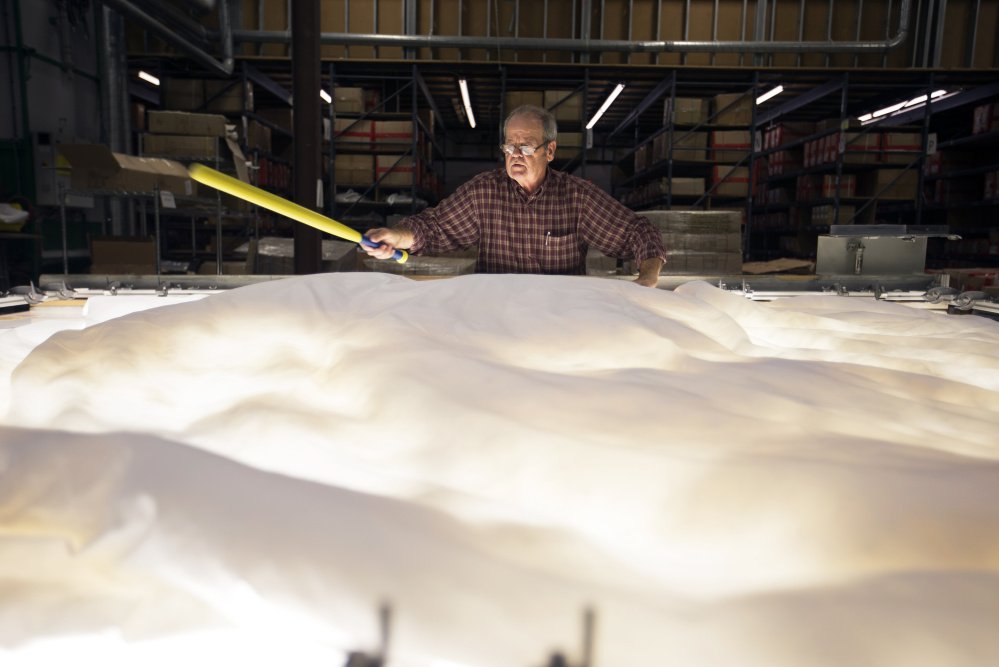
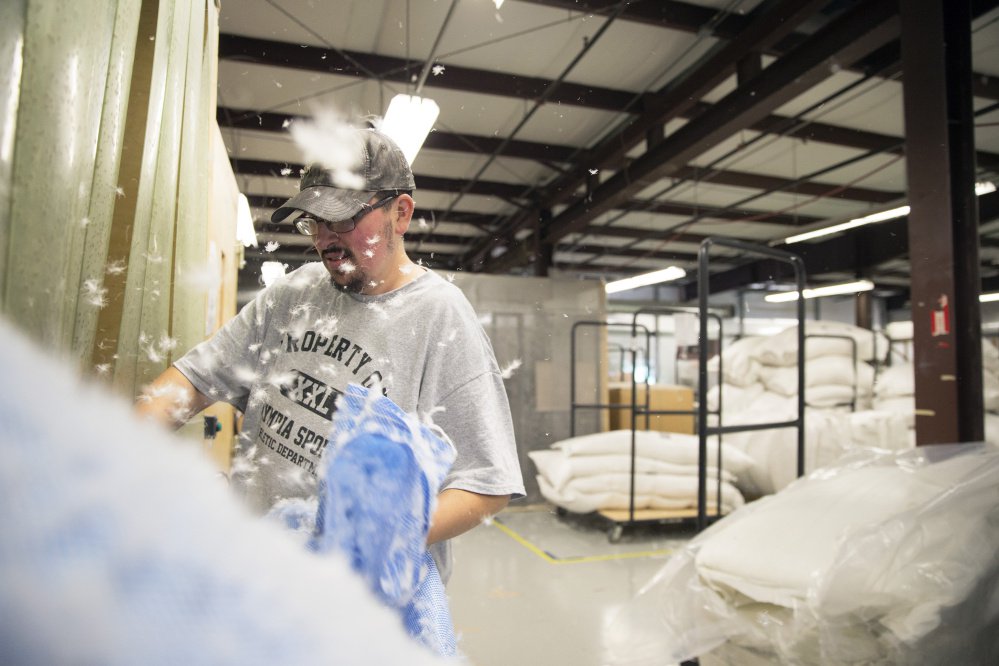
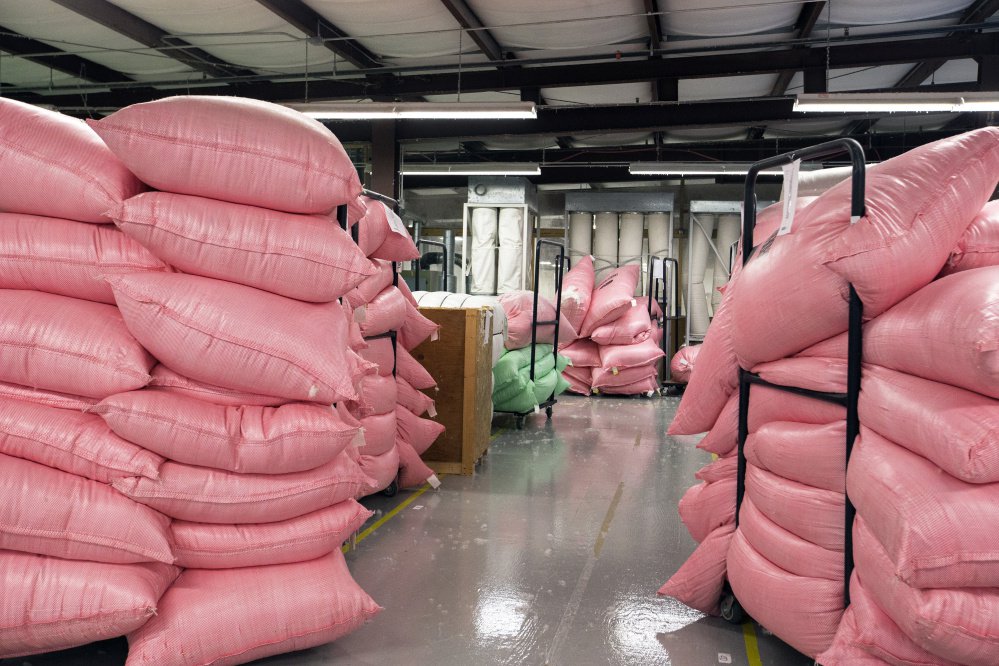
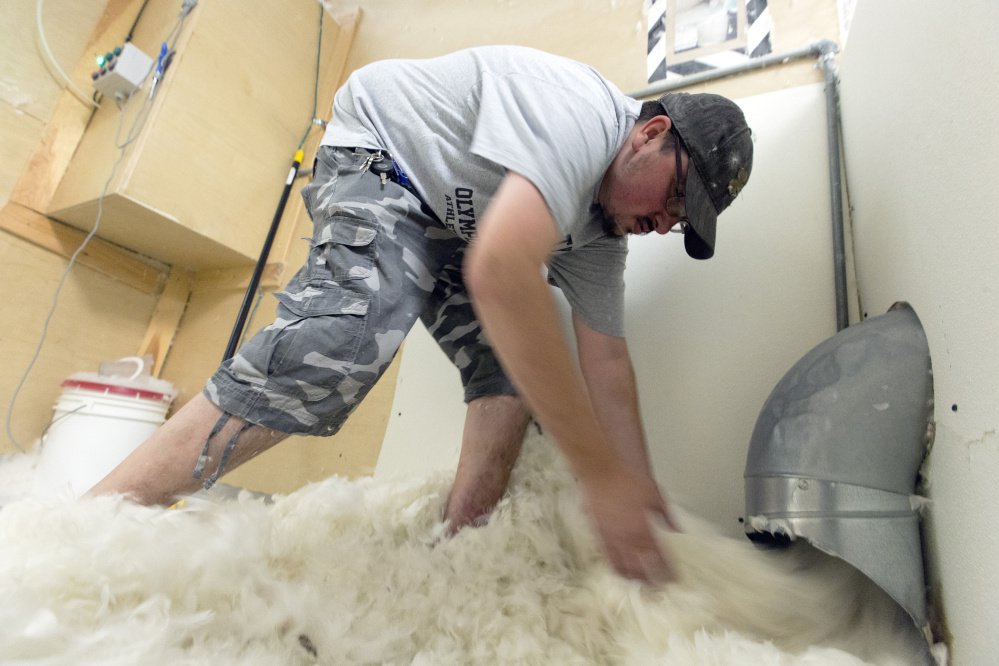
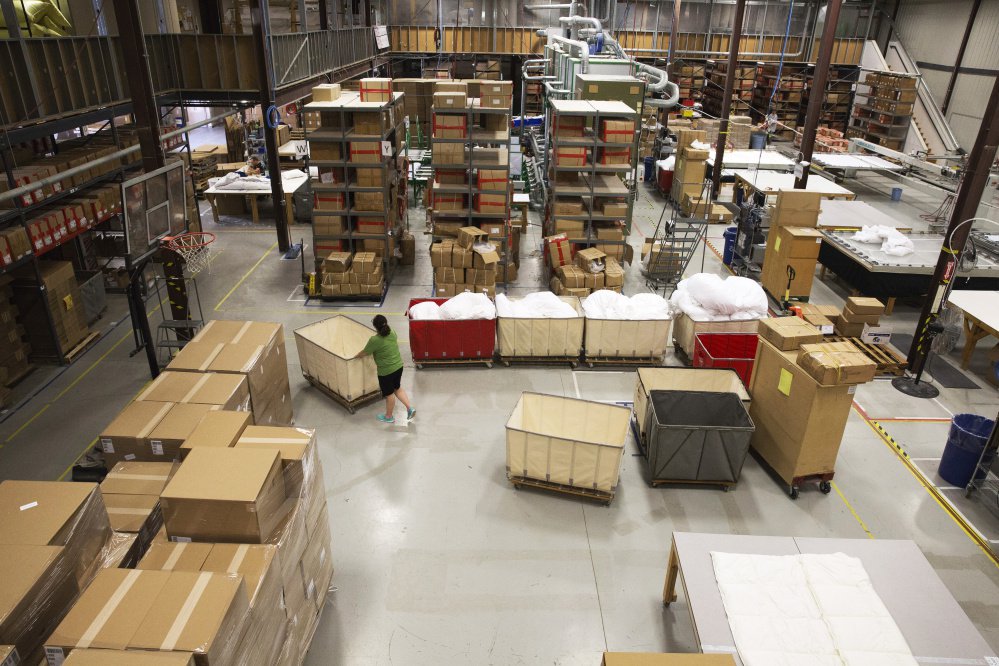

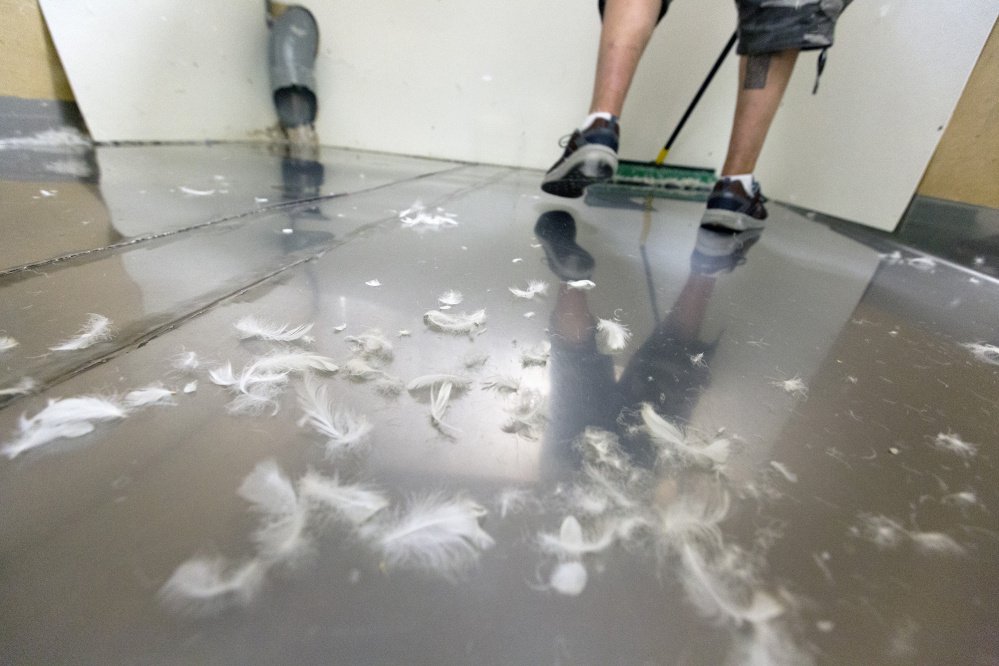

Success. Please wait for the page to reload. If the page does not reload within 5 seconds, please refresh the page.
Enter your email and password to access comments.
Hi, to comment on stories you must . This profile is in addition to your subscription and website login.
Already have a commenting profile? .
Invalid username/password.
Please check your email to confirm and complete your registration.
Only subscribers are eligible to post comments. Please subscribe or login first for digital access. Here’s why.
Use the form below to reset your password. When you've submitted your account email, we will send an email with a reset code.